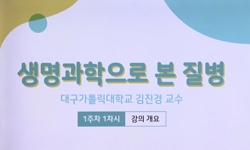Introduction According to the recent coronavirus disease (COVID-19) pandemic experience, many emergency departments experience difficulties in responding to emerging infectious diseases. Our emergency department was designed to respond to mass outbrea...
http://chineseinput.net/에서 pinyin(병음)방식으로 중국어를 변환할 수 있습니다.
변환된 중국어를 복사하여 사용하시면 됩니다.
- 中文 을 입력하시려면 zhongwen을 입력하시고 space를누르시면됩니다.
- 北京 을 입력하시려면 beijing을 입력하시고 space를 누르시면 됩니다.
Response to the COVID-19 outbreak in the emergency department designed for emerging infectious diseases in South Korea = Response to the COVID-19 outbreak in the emergency department designed for emerging infectious diseases in South Korea
한글로보기https://www.riss.kr/link?id=A107174916
- 저자
- 발행기관
- 학술지명
- 권호사항
-
발행연도
2020
-
작성언어
-
- 주제어
-
KDC
500
-
자료형태
학술저널
-
수록면
41-41(1쪽)
- 제공처
-
0
상세조회 -
0
다운로드
부가정보
다국어 초록 (Multilingual Abstract)
Introduction
According to the recent coronavirus disease (COVID-19) pandemic experience, many emergency departments experience difficulties in responding to emerging infectious diseases. Our emergency department was designed to respond to mass outbreaks of infection and modified throughout each phase of COVID-19 outbreak. We aim to describe on the actual responses and medical outcomes.
Material & Method
This research was conducted through a retrospective chart analysis provided by a public medical center with 502 beds since the first report of a COVID-19 confirmed case on January 19th, 2020 to June 15th, 2020 in Seoul, the capital of South Korea. Our hospital has remodeled the emergency department based on the Korea Centers for Disease Control and Prevention (KCDC) guidelines and the Korean Regional Emergency Center Facility Standards under the'Emergency Medical Service Act'. We improved facilities, created programs to respond to each phase of an epidemic (Figure 1), and implemented education and training to promote the safety of medical staff. Patients suspected to be infectious were screened in the triage, separating them from general patients, and then treated in isolation wards.
Result
A total of 4,352 patients visited the emergency department. 3,202 cases were screened for COVID-19 and 1,150 cases were treated with general emergent symptoms. Changes in the pattern of statistics on the number of patients treated by the epidemic period are presented in Figure 2. Few patients went under screening measures early on, but the number increased when a large number of confirmed cases occurred in other cities in mid- February related to religious gatherings. Moreover, the numbers surged when massive infection was identified in clubs in Seoul in early May. There was no contamination of emergency department facilities or exposure to medical staff during confirming 5 cases of COVID-19.
Conclusion
Emergency department designed for emerging infectious diseases can carry out a large number of screening tests and hospitalization for COVID-19 while maintaining general medical services.
동일학술지(권/호) 다른 논문
-
Experience of evidence review for 2020 ILCOR CoSTR
- 대한응급의학회
- 정성필
- 2020
-
Update process of the Korean guideline for CPR and ECC
- 대한응급의학회
- 황성오
- 2020
-
- 대한응급의학회
- 이하니
- 2020
-
Machine Learning-Based Prediction of Critical Illness in Children Visiting the Emergency Department
- 대한응급의학회
- 황소연
- 2020





 KISS
KISS






